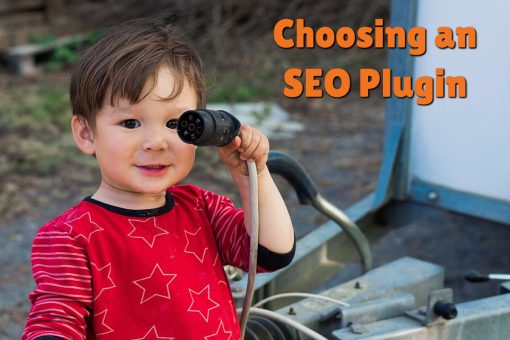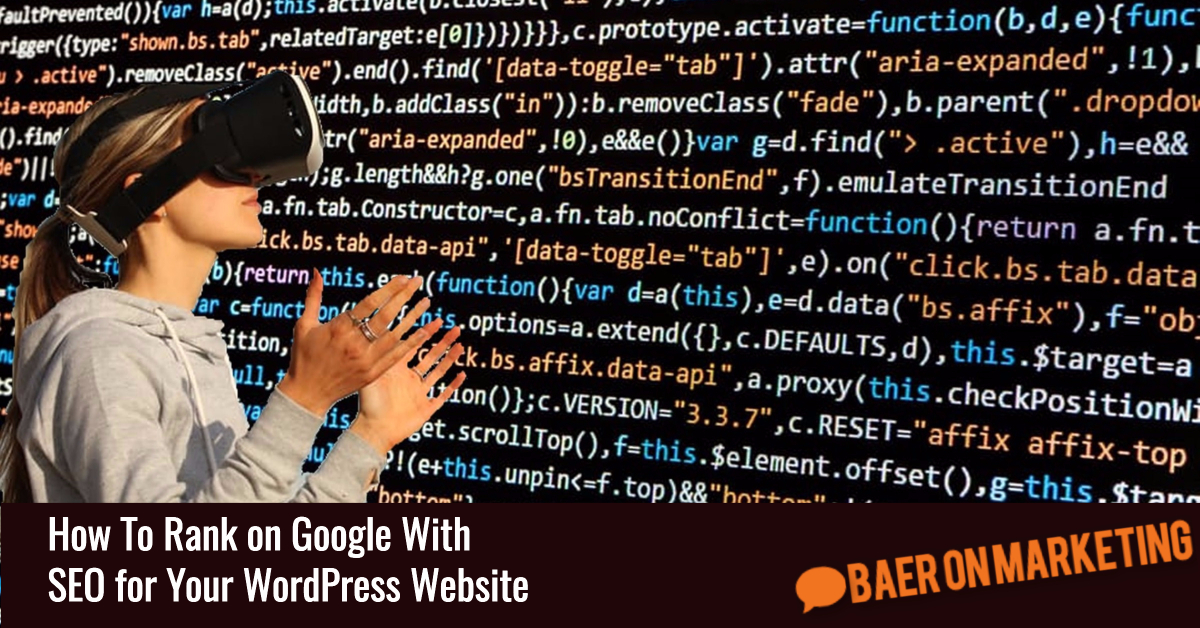
WordPress has moved far beyond its early days a simply a blogging platform. In fact, these days, it's a complete Content Management System (CMS) that will allow users to construct basically any type of website imaginable.
Among the big problems with WordPress, however, is its major lack of native search engine optimization (SEO). It has just basic SEO functionality, and the rest needs to be taken care of through add-ons.
There are myriad plugins readily available for WordPress SEO, however none of them will handle 100% of the optimization for your website on their own. Plus, each of them works differently and have different functions, so choosing the best one for your needs can be challenging.
In this post, you're going to learn more about the fundamentals of establishing your WordPress site for ideal SEO, and how you can make certain your blog or website is established with the standard foundation of effective SEO. We'll take a look at popular plugins, techniques you can utilize to enhance your website, tools you can use, and more.
So, let's begin.
 SEO Basics
SEO Basics
Before you begin working on SEO for your WordPress website, it's important to understand standard SEO principles as they apply to all sites online now, and into the future.
Bear in mind that SEO changes over time. It used to be that just typing a keyword over and over on a page (often in text the exact same color as the background so visitors would not see it) could assist you in ranking on the first page of practically any search engine. But that's no longer the case. Search engine algorithms have gotten much smarter and much more intricate. And sites that used to “cheat the system” are now being penalized.
As of this writing, here are some standard SEO concepts you can utilize to help you in your rankings:
1. Keyword Research
Keyword research will always be very important, even as search engine move more and more toward utilizing semantics. This means that you may rank for “top golf advice” if you pick the keyword “best golf tips” because they are semantically comparable, but you still have to understand what subjects are most typically searched for to be certain you're creating the content that could help you rank for those searches.
2. Title Tags
The title of your page will most likely always hold significant weight. Obviously, people are going to title their page based on their page's material, so search engines will take a look at that as one of the most essential aspects when determining what a page's content is about.
3. Headings
Heading tags (such as H1, H2, and so on) are important because they are related to your page title. The majority of people use heading tags to highlight the title that is found at the top of the page, like the name of the post.
4. Page Text
The text on your page must include your primary keyword expression one or two times, but do NOT try to game the system with too much keyword density. Semantics will take care of the rest.
5. Backlinks
You've probably learned how important getting backlinks are already. However did you know you need to be really careful about how many you get, where they originate from, the text that is used to connect to your page, not to mention a bunch of other elements? We'll have a look at backlinks a little later on, but, yes, getting links to your site (and your individual pages/posts) is very, very important.
6. Social Signals
Social signals, such as likes, shares, pins, tweets, and so on, are another element that will help boost your . While those links may not, in fact, count as far as backlink juice (because a lot of social media links are ‘nofollow' or can not be seen by search engines because of user personal privacy) a lot of them ARE counted for SEO purposes.
7. Content Length
The length of your content now matters more than ever. Google seems to prefer longer content, because it's more thorough and will be more authoritative and beneficial to readers, so longer copy is key. The days of 250-300 words posts are long gone. Nowadays, 750-1000 words is more suitable, and anything longer is even better.
8. Load Speed
The speed at which your page loads is incredibly important. If your page takes too long to load, it WILL impact your SEO rankings.
9. Outbound Links
Though a lot of people recognize having links TO their site is important, few seem to know that linking OUT to other authority sites can enhance your own rankings. It's a great idea to cite sources for your content with a link or suggest other great material that offers a different point of view than your own. Going overboard will hurt your ranking, but a couple of links sprinkled into your articles to sites with good authority will assist.
10. Mobile Friendly
Your website must be optimized for mobile web browsers, either resizing dynamically or rerouting mobile users to a different variation of the site. For WordPress websites, this means selecting a mobile-friendly theme.
11. Trust
Trust is an important element. It's a measurement of just how much Google believes your site is trustworthy, and includes a number of various factors consisting of domain age, length of time before the domain expires, connecting to recognized authority sites, having a correct privacy policy, terms and conditions, and so on, bounce rate, and other factors.
You can check your Trust Rank with Google Chrome using this browser extension.
This is not, by any means, and exhaustive list of ranking criteria. It would take a full-length book to describe all of them. But it's a good, solid structure on which to construct your SEO plan.
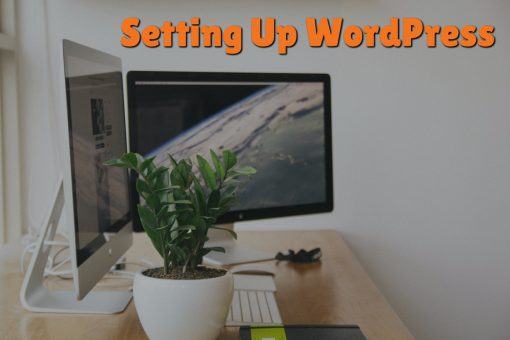
Setting Up WordPress
The first thing you have to provide for WordPress SEO is to be sure you have actually completed the standard, important setup for your WordPress site.
Your URL
First, you need to choose whether you ‘d like your website to be discovered at:
http://yoursite.com
OR
http://www.yoursite.com
Either one is great for SEO purposes, so it depends on you which you use. If you have an aged domain you may want to check MozTrust for your domain to see if one variation has more trust than the other, you'll clearly want to utilize that one.
To alter your URL, merely check out Settings > General. Your WordPress URL and your Website URL will most likely be the very same unless you set up WordPress in a subdirectory.
As soon as you do this, you'll want to visit Google Webmaster Tools to make sure they utilize the best version.
Under Webmaster Tools, go to Settings > Preferred domain. There you can set it to show URLs with or without the www.
Permalinks
Among the most vital basic setup steps you need to undertake for SEO on your WordPress site is to change the permalink structure discovered under Settings > Permalinks.
The default structure is ?p= postid which is dreadful for SEO functions. It doesn't allow the use of keywords in the URL and does not provide any useful info to search engines.
To alter you structure, select either “Post name” or “Custom structure.” If you select post name, your URLs will look like this:
http://yoursite.com/title-of-your-article
You can likewise utilize a custom structure such as %classification%/% postname%.
This would make your URLs look like this:
http://yoursite.com/category/title-of-your-article
Either one is great for SEO functions, however utilizing the category/title supplies a good “Silo structure”, which generally suggests it assists the authority of your pages due to the fact that everything is organized into particular categories instead of being lumped in together.
Choosing an SEO Plugin
There's a hundreds of plugins out there to assist you manage the SEO of your WordPress website, but they boil down to two popular options:
Both are really comparable in functions, and either one will work great for SEO purposes. They are slightly different in terms of features, so you might want to briefly try both just to see which you like better.
Yoast has a somewhat better overall rating on the WordPress site, and is utilized by over 1,000,000 blogs. All-in-One is also used on over 1,000,000 blogs.
Dan Shure, of Evolving SEO, did a really detailed side-by-side comparison of Yoast vs. All-in-One here. He found a definite advantage of using Yoast over All-in-One, winning on a large number of SEO factors.
If you search in the comments, he discussed he can see All-in-One working well for smaller sites or bloggers, but Yoast is certainly the best option when SEO actually matters.
This article was written in 2014, and things can change quickly when it comes to SEO and plugins, so it's still a good idea to check alternatives yourself. This article just supplies a great beginning to help you choose on your own. (Besides, it also gives you a basic understanding of the significance of some SEO factors.)
Whichever plugin you select, make sure to read the instructions well and make sure you're utilizing every possible feature they offer. A lot of people set up the plugin and expect it to work automatically, but there are things that should be modified, and you'll have to include some additional details every time you make a post such as the primary keyword you want that page to be optimized for.
Google Webmaster Tools
Webmaster Tools isn't really just for WordPress websites, however it's important that you sign up for it, just the same. It will enable you to keep an eye on any issues your site might have, set specific preferences for your site, and keep tabs on certain things such as exactly what keywords people are using to pull your website up in Google.
If you have the WordPress SEO plugin by Yoast, it's simple to validate your site in Webmaster tools. Log into Web designer Tools here.
Select the “Alternate methods” tab and select “HTML tag”. Copy the meta tag displayed in package by highlighting it and pushing CTRL-C, or pushing COMMAND-C on a Mac, or best clicking and selecting copy.
Under the SEO tab in your WordPress admin (Yoast SEO) choose Extensions. You'll see several fields where you can go into codes for different websites. Enter your code in the Google Web designer Tools section, and then go back to Web designer Tools and click VERIFY.

Google Analytics
Another crucial aspect of SEO is having analytics so you can track your progress and find out exactly how you're doing. Google Analytics is the most common tool for this. Plus, it's free!
Regrettably, changes to Google's privacy settings have actually destroyed a lot of the effectiveness of Analytics. It used to be that you might see almost every keyword used to discover your website. Now, you can only see a handful of keyword searches.
Still, Analytics is useful for a variety of reasons. It will allow you to see how much traffic you're getting, where your traffic is coming from, what your bounce rate is (the portion of people who leave your site without viewing other pages), and other crucial details.
There's a plugin from Yoast that will allow you to quickly include Analytics to your WordPress site. You can download the plugin, in addition to discover installation and use guidelines here.
ACCESS OUR FREE GOOGLE ANALYTICS TRAINING HERE

Page Speed
Another significant element of SEO is the speed at which your page loads. Google wants its visitors to get the most enjoyment out of their web browsing experience, and if a site takes too long to load, visitors will frequently leave out of frustration. This increases bounce rate, and also tells Google that people who visited your site were not happy.
To examine your page speed, consisting of discovering actionable information you can use to speed up your page, take a look at Google's Page Speed Insights.
This tool will help you figure out exactly what needs to be changed in order to accelerate your site. It may involve getting a speedier host, or it might be as basic as optimizing your images or setting up a caching plugin.
W3 Overall Cache is among the most popular caching plugins. It will turn your vibrant pages into fixed ones, indicating they load quicker.
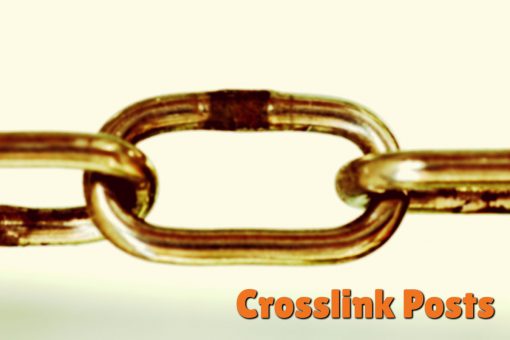
Crosslink Posts
As soon as you have the foundation of your SEO set up, it's time to make sure you're doing all you can whenever you create a new post in order to guarantee the best result for your SEO.
That means making a few key posts that you might think of as cornerstone posts, and then referencing those posts in other similar posts.
For instance, let's say you have actually a post called “10 Ways To Increase Traffic.” It might be really in-depth, detailed info about utilizing 10 different social media networks to increase a website's traffic.
You might create smaller blog posts on each of those traffic sources and link to your cornerstone post by saying something like:
“Facebook is just one way you can increase your traffic with social media. Have a look at my post '10 Ways To Increase Traffic' for more ways to explode your website's traffic.”
Not only will this help lower your bounce rate, it will likewise benefit you by giving a boost to the SEO capacity of your cornerstone posts.
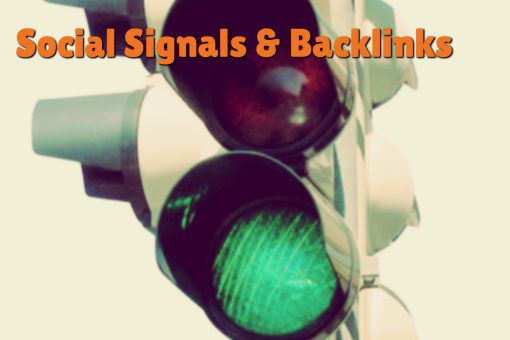
Social Signals & Backlinks
You know it is necessary to get backlinks to your site, however did you know the source of your backlinks and the text utilized to connect to your site is just as essential as getting a lot of links?
You want to make sure you get backlinks from quality sites, and from a wide array of various domains. You also want to make certain you're NOT utilizing the exact same text to connect to your website each time, because this can appear spammy. Rather, vary the text utilized to link to you in between a couple of similar keyword expressions, and possibly the name of your website, too.
Social signals are also progressively crucial. The more likes and shares you get on a big variety of platforms and from a great deal of accounts, the much better.
Be sure you have a plugin installed to assist you get more likes and shares to your material. On this site, we use Shareaholic, but there are many other options out there to choose from.

Your Next Steps
SEO is a complex, ever-changing game. You have to stay on top of it if you expect to get considerable traffic from Google and other online search engine.
And you certainly want to be employing smart SEO tactics if you want to get more targeted traffic to your site. After all, over the long term, SEO has proven to be one of the best investments for getting targeted site visitors.
Now it's time to put what you've learned into action. If you need some help with SEO, we're always here to assist.
Remember, SEO is important, but it's only one piece of the overall digital marketing puzzle. To understand how all the pieces fit together, check out our free 5 Pillars of a Successful Online Business training.

